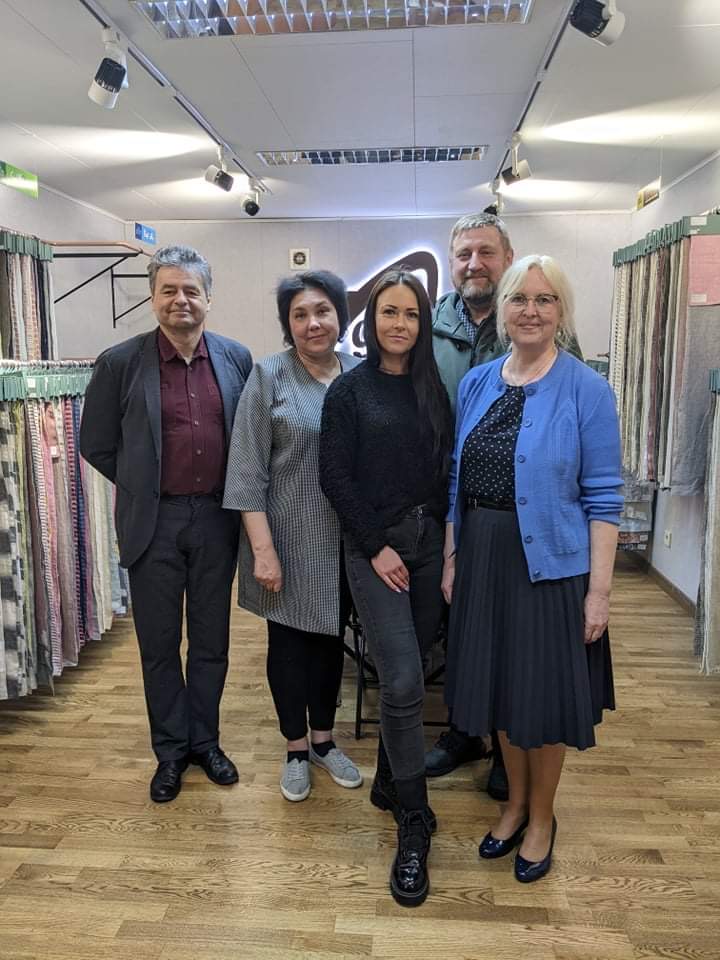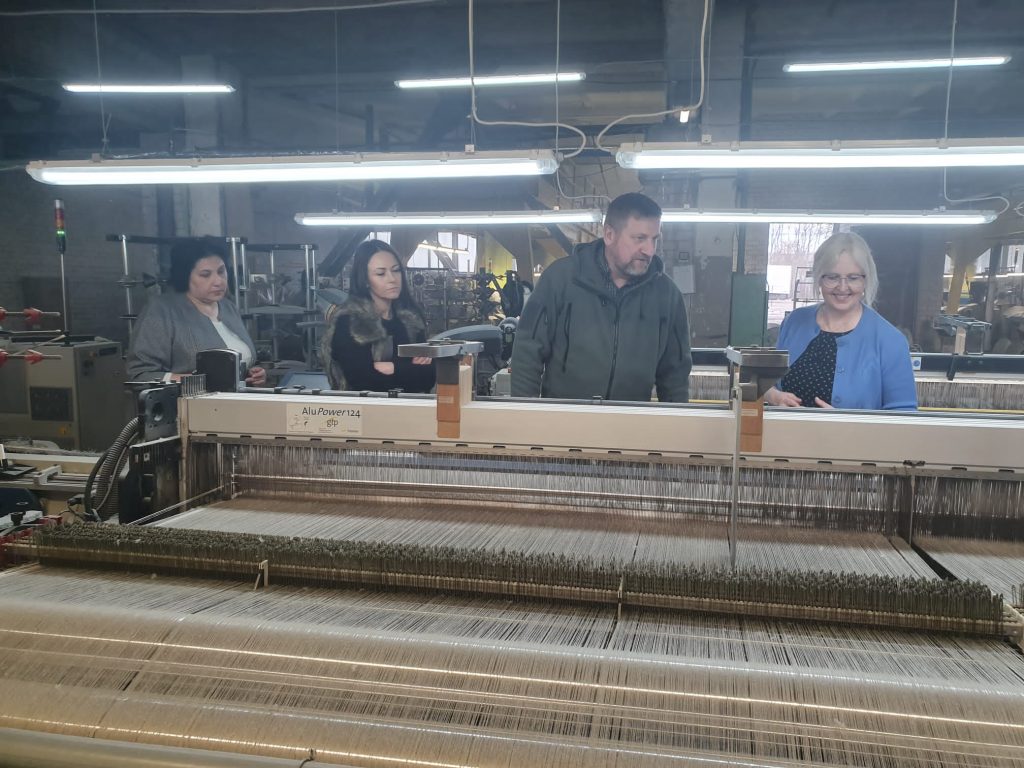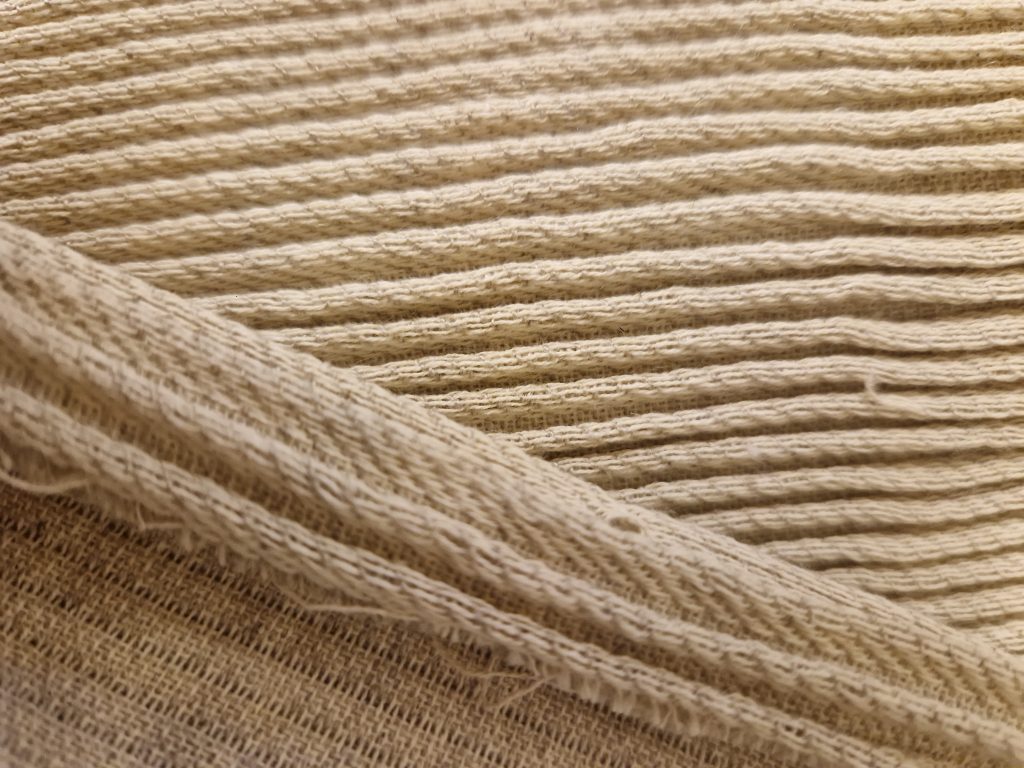The goal of the project is the development of innovative 3D bio-textile materials, creating a technological platform for the integration of nanoparticles in fibres and bio-textile fabrics to improve the protective properties of these materials.
Succinite (amber) is a specific mineralized raw material found in the unique marine climate of the Baltic Sea region. The source of the idea of integrating succinite fibres into textile materials is the scientific knowledge about the effects of bioactive compounds of amber, and its derivatives, on living cells, there is a reparative, stimulating or a calming effect. In addition to succinite, silver (Ag), aluminium (Al) or SiO2 nanoparticles can be incorporated into the bio-textile composite material to improve the protective properties of the newly created bio-textile materials. 3D composite material with nanoparticle structures (250-500 nm) evenly distributed over the surface of textile threads form a large contact area with a high degree of air permeability. Because amber is a non-renewable natural resource, as a possible succinite alternative, it is planned to study various components in plants (for example, succinic acid and its derivatives) that could lead to the cost reduction of the final product.
The development is based on a strategy to create and produce a high-performance composite material by combining textile fibres into 3-dimensional structures. The development cycle of 3D bio-textile materials includes a 3-dimensional composite of high-quality fibres, i.e., creation of a polymer structure as a succinite carrier, further supplementing this composite with SiO2, Al, Ag nanoparticles in various combinations. At the same time, biotesting of these new developments and continuous feedback between biological testers and bio-textile developers ensures continuous optimization of production processes.
Potential benefits – expanding the boundaries of the protective properties of 3D bio-textile materials:
1) external protective properties provide enhanced protection against:
– the effects of various electromagnetic fields (EMF), both in low EMF (50 Hz) and in the radio frequency range (100 kHz to 300 GHz);
– the effects of ultraviolet radiation (UV) (ƛ = 240-400 nm);
– charged micro-pollution particles, including those of biological origin (1-10 µm), forming a mechanical barrier.
2) cell protection will be provided by fibres containing succinite.
Such new materials are effective in today’s conditions, when most of the population lives under the influence of urbanized, permanent electromagnetic fields, high-intensity ultraviolet radiation and polluting particles.
The project promotes the transformation of the existing scientific cooperation into a long-lasting synergy and increase the level of scientific excellence of the involved scientists in the multidisciplinary research by involving both young scientists and researchers in the development of high composite materials, biotechnologies (biocompatibility, antibacterial properties, biodegradation) and bioengineering. Advanced bioassay techniques will be used as a basis for studies of various cellular responses and early detection of apoptotic cells.
Project coordinators:
– JLU Technologies SIA (LV)
Project partners:
– University of Latvia, Institute of Biology, Laboratory of Environmental Genetics (LV)
– Nature Research Center (LT), Laboratory of Molecular Ecology
– A Grupė UAB (LT)
The M-ERA.NET_3 project is funded by the European Union research and innovation program Apvārsnis 2020 according to grant agreement no. 958174 (program “Horizon 2020 – Research and Innovation Framework Program (2014-2020)”).
The total amount of the project is 475,000 EUR. Project implementation time 01.05.2022. – 30.04.2025.

Pictures:
Figure 1. Project management group A Grupe , JSC in the exhibition hall 2022: from the right, LU project manager Assoc. prof. dr. biological Dace Grauda (Head of Environmental Genetics, Institute of Biology, University of Latvia), Virginijus Vizbaras (A Grupe, JSC General Director), Janina Žentelytė (A Grupe, JSC Commercial Director), Project Manager Dr. Eng. Inga Lashenko (JLU Technologies SIA, Director), Lithuanian project manager Dr. hab. biological Dalius Butkauskas (Head of Molecular Ecology Lab., Nature Research Center, Lithuania)
Figure 2. 3D fabric weaving in the A Grupe weaving workshop.
Figure 3. Natural fiber (linen) 3D fabric with amber and SiO2 nanoparticle coating.
Figure 4. 3D fabric coated with amber and silicon nanoparticles (microscopic image).
Figure 5. 3D text biotesting. Determination of the amount of apoptotic cells after incubation of cell cultures in an electromagnetic (50 Hz) field. Flow cytometry method (BD Facs JazzTM).




